1.4L vs 2.0L turbocharged engines
Looking at the numbers from the 1.4T engine vs the 2.0T engine, you can see why people that want to go really fast with a Cruze might want to do this. The 1.4T engine, from the factory produces 139HP (the new 1.4T “LE2” engine produces 154HP), and the 2.0T engine produces anywhere from 220HP to 272HP depending on which engine and variant is used. Put an aftermarket calibration on these engines and they approach 200-220HP, and 300-330HP, respectively.
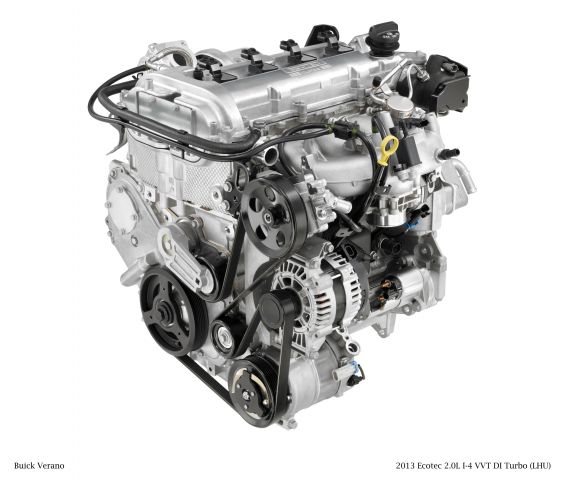
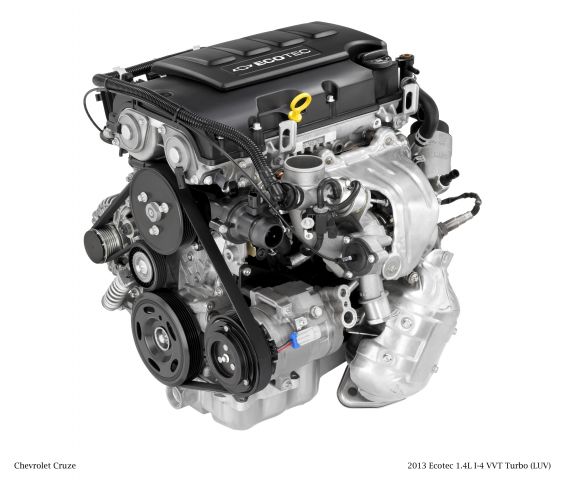
(Source: media.gm.com)
So, let's swap the engine already!
Great! So we know we want a 2.0L turbo engine in our Cruze, let's just swap one in! Unfortunately, it's not even close to being that simple. The 1.4T and the 2.0T are of different physical sizes, and are of varying architecture, specifically being that the earlier 2.0T (the LNF/LHU engine) has the turbocharger on the opposite side of the engine as the 1.4T does. The newer 2.0T (LTG engine) has the turbocharger on the correct side, but still has the challenge of being physically larger than the 1.4T. Right off the bat, custom engine mounts would have to be developed, coolant and oil hoses would need to be customized, new exhaust would have to be fabricated, front to back, wiring harness would have to be customized.
Now, we would surmise that swapping in a 2.0T (LHU engine) from a Buick Verano, being that the Verano is of the same chassis as the Cruze, might allow the use of factory harnesses and parts that would make the swap much easier, but every element listed above should still be of concern.
But that's just the engine. Then there's the transmission. Particularly in front wheel drive applications like the Cruze, GM has no less than eight different transmissions supporting varying levels of torque. The Cruze with the 1.4T is equipped with the 6T40 transmission, and the Verano, for instance, is equipped with the 6T50 transmission. One might get away without swapping the transmission, but for completeness's sake, we're going to assume this needs to be swapped as well.
Then there's ECU swap, the potential for needed customized drive axles, upgraded radiator size, etc.
Cost of engine swap
In any event, let's just assume, for simplicity's sake that the entire engine, transmission, harness, and ECU can just be swapped from the Verano. We couldn't find any specific salvage pricing on this, but we'd expect it to be in the $2000-$4000 range for all of the components required. Then there's the labor of doing the swap. Maybe an enthusiast would undertake this on their own, in which case tangible labor cost would be zero. Miscellaneous parts, exhaust fabrication, etc., we estimate would add another $2000 or so to the project cost.
But then there's the resale value of the vehicle itself. If someone were to perform a swap like this on a Cruze, its value would plummet. This vehicle, even assuming it ran perfectly, would require a special buyer when the time came to sell it. The oldest Cruzes available in the United States sell for between $8500 and $15000. We'd expect a swap like this to cause a 30% loss in value, so, let's say $2500 just to pick a round number.
Total cost of engine swap: about $7500 or more
Yes, we said it: buy a Malibu instead of a Cruze
As mentioned above, this is a bold idea. Most current or potential Cruze owners, right off the bat would scoff at this idea. Buying a “family hauler” instead of the more-sporty Cruze?? After all, Malibus are built for the rental car agencies, right? A Malibu lacks style at all. It's big. It's heavy. It's slow. There's no aftermarket for it. And it's more expensive.
However, starting with the 2016 model year, Chevrolet introduced both an all-new Cruze and all-new Malibu. The aesthetic differences between the two are much fewer than with the previous generation.

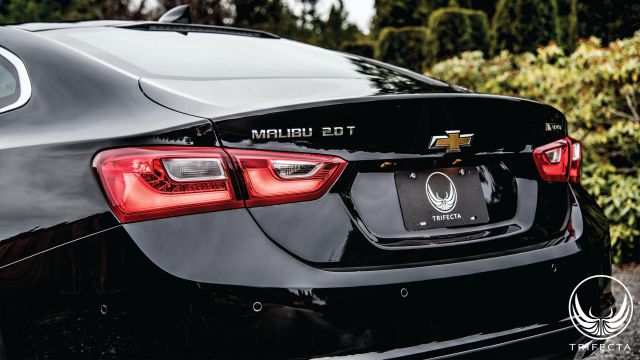
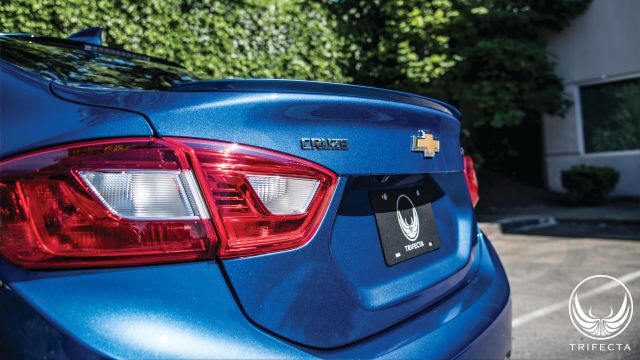
Malibu vs Cruze
Indeed, Chevrolet is now using fairly common design language between the Cruze, Malibu, and the larger-yet Impala. If we are to assume that the looks of the all-new Malibu are acceptable to a potential Cruze owner, let's move on to a more detailed analysis of the likenesses and differences between the two models.
Performance: You can get a 2.0T with a Malibu. And also an 8 speed automatic.
The new Cruze, for 2016, only offers one engine: the 1.4L Turbo LE2 engine, which produces 154HP and 177 lb-ft of torque. The new Malibu offers two engines (exc. the Hybrid model), a 1.5L Turbo LFV engine (163HP / 184lb-ft torque), and a 2.0L Turbo LTG engine (250HP / 260lb-ft torque). For the purposes of this writing, however, we are only going to look at the 2.0L Turbo engine.
While the fact the Malibu doesn't offer a manual transmission (whereas the Cruze does) would be a deal-breaker for some people, the truth is most Cruzes are built and sold with an automatic transmission. A 6 speed automatic transmission. The Malibu, in contrast, with the 2.0L Turbo engine, is equipped with a smooth shifting 8 speed automatic transmission (also used in the Buick LaCrosse, and the Cadillac XT5). And for the 2017 model year, the Malibu 2.0L Turbo is stepping up to GM's all-new 9 speed automatic transmission.
Not only does the Malibu 2.0T offer 96HP and 83lb-ft of torque more than the Cruze, with the 8 speed automatic transmission, there is a greater gear ratio spread which also contributes to both quicker acceleration compared to a 6 speed automatic, but also improved highway fuel economy vs a 6 speed automatic.
How does the rest of the car match up?
For sake of comparison, we will compare a 2016 Cruze LT Automatic/RS Package/Sun and Sound Package with a 2016 Malibu 2LT. For the Cruze, the LT Automatic/RS Package/Sun and Sound package is by far the most popular model at the dealerships, and the Malibu 2LT is the lowest trim level which is equipped with the 2.0T. Also, this gives us an apples-to-apples comparison.
Don't get us wrong. The Malibu is a bigger car than the Cruze. It's more spacious in every way, but it also weighs more. But not THAT much more. The Cruze, in its lightest form weighs in at about 2600lbs. The Malibu weighs in at about 3100lbs.
For those that love sunroofs, the Malibu's sunroof is quite superior. It's roughly double the size of the Cruze's sunroof (though only the front half of it opens). The Malibu comes with leather at this trim level, whereas the Cruze does not.
The Malibu comes with 18” wheels, the Cruze with 16” wheels. Both have disc brakes on all corners. One area we feel the Cruze is superior, however, is in the handling-feel department. The Cruze has a stiffer ride, and experiences less “body roll” in the corners than its larger brethren, the Malibu.
Economy-wise, the Cruze is rated up to 42MPG, and the Malibu up to about 35MPG with the 2.0T.
Cost comparison
At the end of the day, it comes down to cost. The Malibu is more expensive, for certain, but by significantly less than what it would cost to do an engine swap. According to Chevrolet.com, the 2016 Cruze LT Automatic, with the RS package, and the Sun and Sound package (which requires other packages such as the Convenience package) has an MSRP of $25335.
The 2016 Malibu 2LT “base model”, which is similarly equipped to the Cruze LT Automatic, with the RS package, and the Sun and Sound package is $29495. This is a difference of only $4160. More car, a heck of lot more power, with similar styling.
However, we found, at the time of purchase for both our Cruze 1.4T and our Malibu 2.0T, there were significantly better incentives available on the Malibu.
At that time, one could lease a Malibu Premier, with every option under the sun, far beyond even the Malibu 2LT's option load-out, for about $275/mo and $3600 down payment, for 24 months. This works out to a total cost of $10,200 for two years.
The Cruze, in contrast, was offered with the same lease terms for about $265/mo, and $2400 down payment. This works out to a total cost of $8760.
This is only a difference of $1440 over the course of two years, and this is for a Malibu that is even more well-equipped than the Malibu 2LT we used for comparison. Were one to compare terms on the Malibu 2LT, it might actually be cheaper to acquire the Malibu than the Cruze!
Conclusion
We're making a very strong case for the Malibu vs the Cruze, here, for those that like the Cruze styling but want more power than the Cruze has to offer. Both the Cruze and the Malibu are especially exciting vehicles to drive with an aftermarket calibration, but, we have to be honest, the Malibu 2.0T with an aftermarket calibration blows the doors off a Cruze with an aftermarket calibration. Hence, we call the tuned Malibu 2.0T, “The 300HP Cruze”.
Those considering a new Cruze, particularly those that want to go fast, should take a hard look at the Malibu. With the previous generation Malibu, we would have agreed with you: Are you kidding? But the new Malibu is a world's worth of improvement over the previous generation, and the differences between the Cruze and Malibu have been largely blurred. As is the pricing difference.
TRIFECTA Calibration Engineering Team
Select Your Vehicle
-
Testimonials
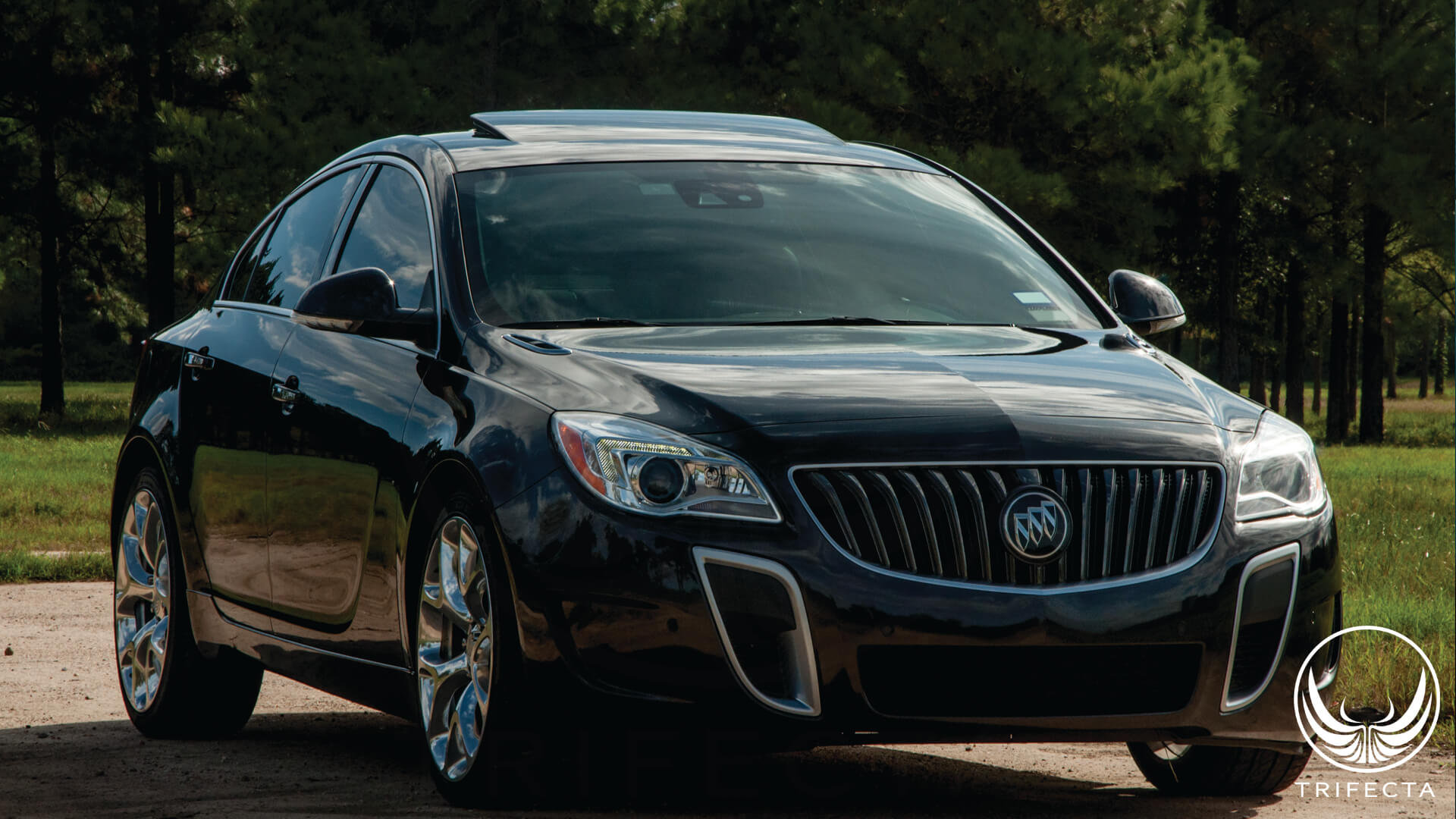 04/18/2016 03:08 AM
04/18/2016 03:08 AM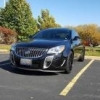 This is a sweet tune, and delivers everything they claim! I am very pleased with my purchase Thank You!
This is a sweet tune, and delivers everything they claim! I am very pleased with my purchase Thank You!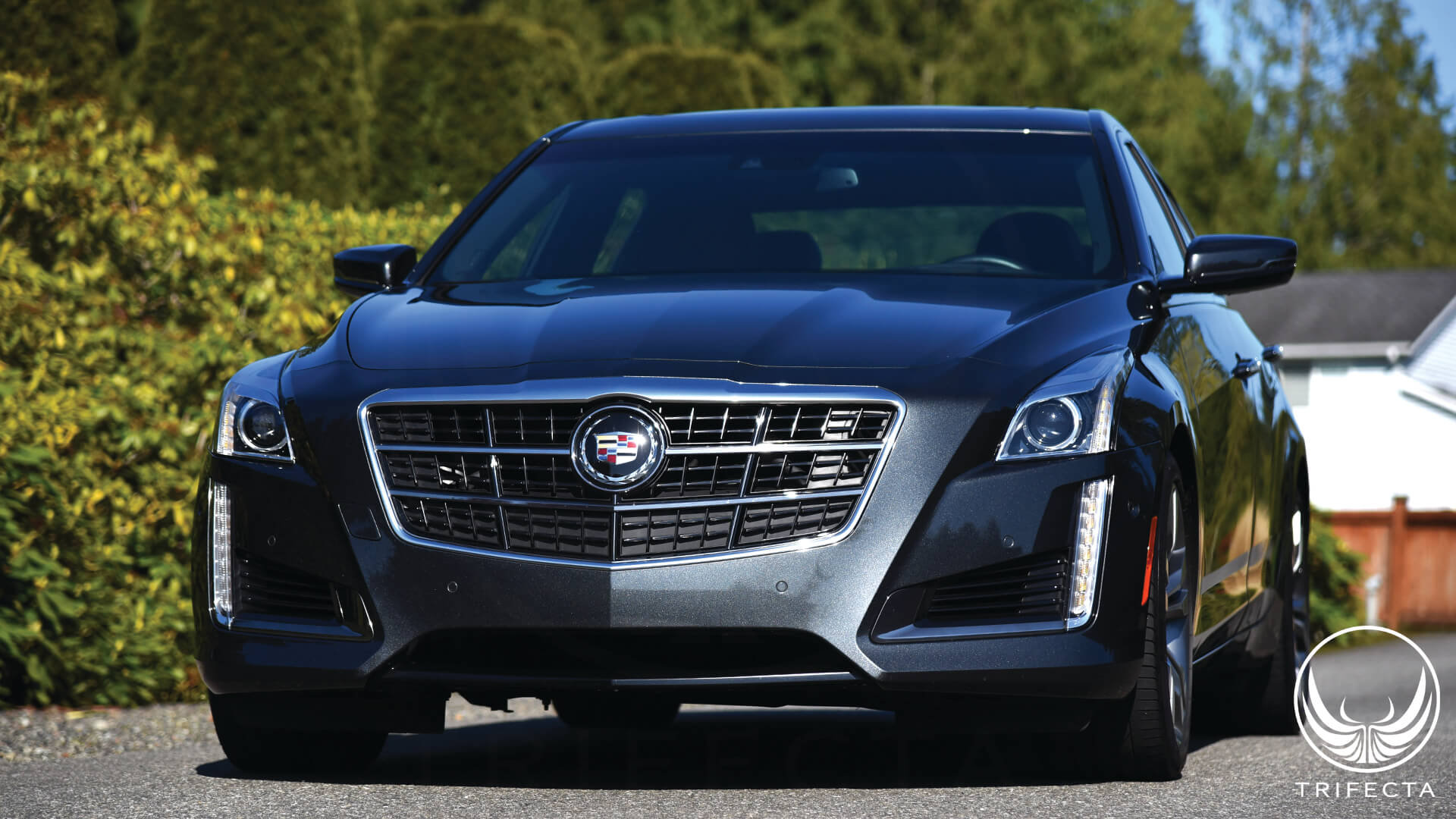 10/24/2021 03:01 PMI was considering upgrading to a newer V, but value wise the current market just doesn't make it a reasonable choice. I decided to just freshen up the current V-sport and enjoy …
10/24/2021 03:01 PMI was considering upgrading to a newer V, but value wise the current market just doesn't make it a reasonable choice. I decided to just freshen up the current V-sport and enjoy … 10/01/2021 11:28 PMWow is all I can say!!! Really made the car come alive. Customer service is top notch!!!
10/01/2021 11:28 PMWow is all I can say!!! Really made the car come alive. Customer service is top notch!!! 06/03/2020 02:21 AM
06/03/2020 02:21 AM Not much to say other than it works, and it's easy, fuel economy improved significantly in eco mode, shifting is so much smoother it's unbelievable. seriously changed the way th…
Not much to say other than it works, and it's easy, fuel economy improved significantly in eco mode, shifting is so much smoother it's unbelievable. seriously changed the way th… 06/25/2018 12:54 PMI just installed my trifecta advantage in my 2015 colorado 3.6 two wheel drive truck. What a difference it makes in the shifting compared to the factory settings. I've driven the t…
06/25/2018 12:54 PMI just installed my trifecta advantage in my 2015 colorado 3.6 two wheel drive truck. What a difference it makes in the shifting compared to the factory settings. I've driven the t… 10/04/2020 02:22 PMI am new to the Chevy Turbo’d game, def not new to high performance machines. Vehicle was displaying issues when tune was purchased, once we were able to do logs the guys at trif…
10/04/2020 02:22 PMI am new to the Chevy Turbo’d game, def not new to high performance machines. Vehicle was displaying issues when tune was purchased, once we were able to do logs the guys at trif… 08/07/2019 01:02 AMWell I got me a 2014 Chevy Trax AWD 2LT and I have been thinking about the tune for a bit of time but Man I tell ya I did the tuna in less then 10 minutes and it make a FucXing …
08/07/2019 01:02 AMWell I got me a 2014 Chevy Trax AWD 2LT and I have been thinking about the tune for a bit of time but Man I tell ya I did the tuna in less then 10 minutes and it make a FucXing … 09/11/2015 01:19 PMAbsolutely worth every penny. Much better shifting pattern, throttle response, and torque. I wish Trifecta were a little more transparent with information on upcoming products and …
09/11/2015 01:19 PMAbsolutely worth every penny. Much better shifting pattern, throttle response, and torque. I wish Trifecta were a little more transparent with information on upcoming products and …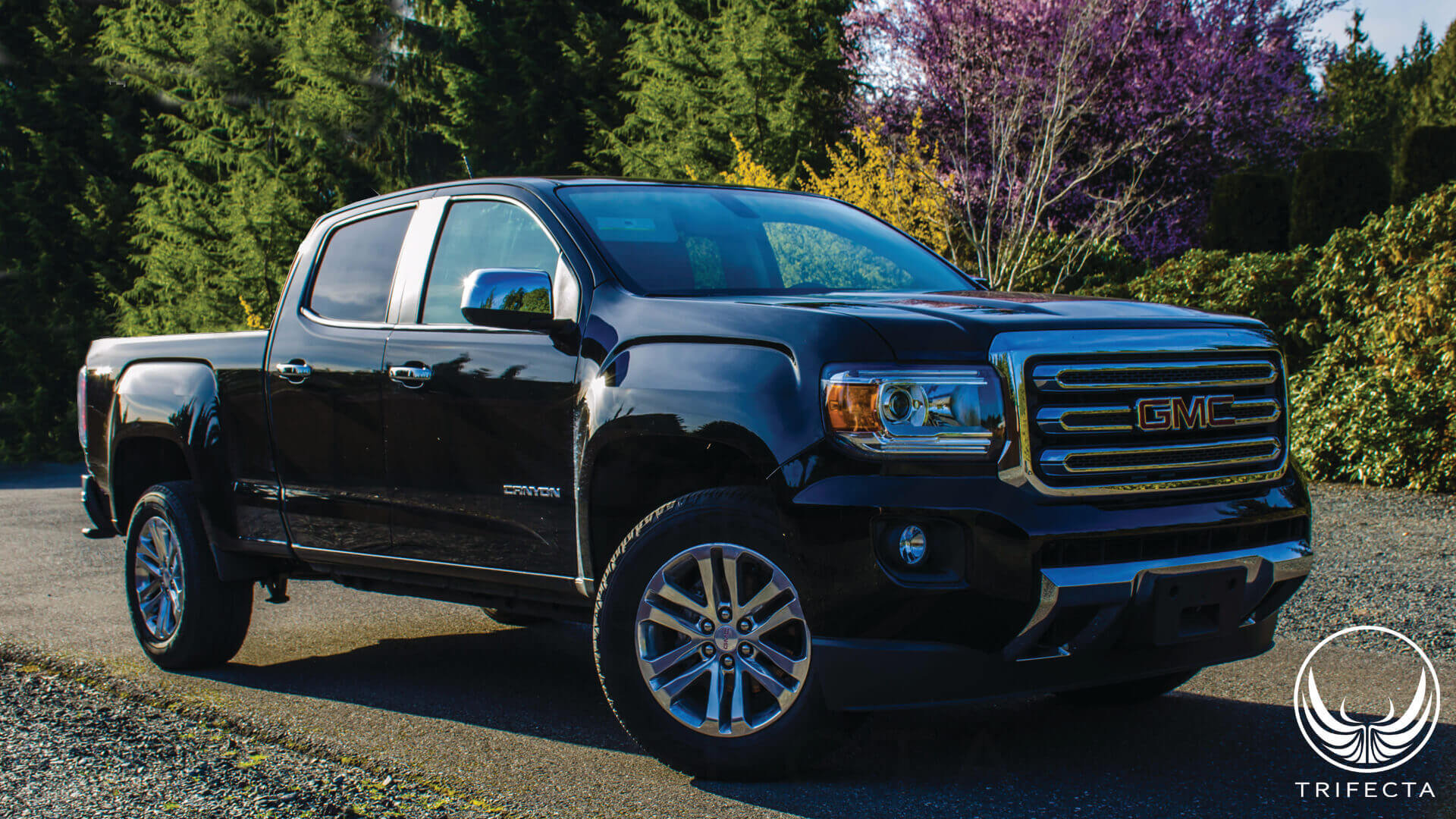 10/07/2016 03:44 PMAbsolutely awesome tune. Like many others the I found that the truck was very sluggish and seemed to require way too much pedal to get it to accelerate, then when it would finally …
10/07/2016 03:44 PMAbsolutely awesome tune. Like many others the I found that the truck was very sluggish and seemed to require way too much pedal to get it to accelerate, then when it would finally … 08/28/2018 01:03 AMWell it's been 2 years with the tune. 1 year on e85, haven't had 1 problem. Just got back from a 800 mile trip. Had to switch back to 93 mid trip. Because I couldn't find e85. …
08/28/2018 01:03 AMWell it's been 2 years with the tune. 1 year on e85, haven't had 1 problem. Just got back from a 800 mile trip. Had to switch back to 93 mid trip. Because I couldn't find e85. … 07/19/2017 03:45 PMThe tune put some life into the truck.
07/19/2017 03:45 PMThe tune put some life into the truck.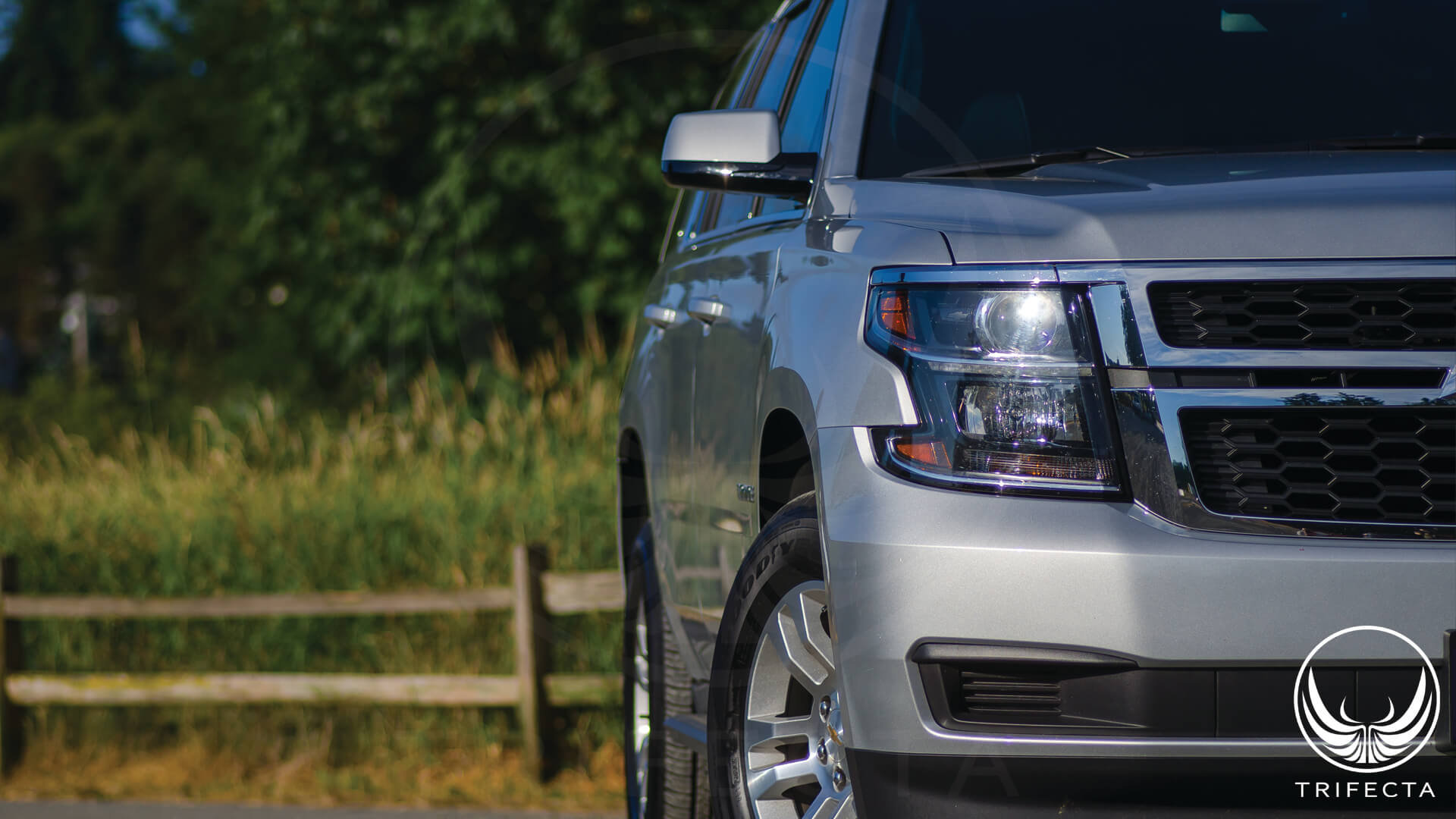 12/31/2018 10:10 PMWow, loaded up while the Mrs was away and took it for a spin, grabbed tire squeals in 1st, 2nd, 3rd AND 4th. nice new rumble out the tail pipe. engaged the cruse for Eco mode a…
12/31/2018 10:10 PMWow, loaded up while the Mrs was away and took it for a spin, grabbed tire squeals in 1st, 2nd, 3rd AND 4th. nice new rumble out the tail pipe. engaged the cruse for Eco mode a… -

By TRIFECTA Performance •
TRIFECTA: The 2.0L Turbo 300HP CruzeTRIFECTA: The 2.0L Turbo 300HP Cruze
Introduction
For as long as we've been in the business of tuning Chevrolet Cruze with the 1.4L Turbo, someone out there (incuding us, on one occasion or another) has daydreamed about putting a 2.0L turbo engine in the Cruze. Let's be honest. The Cruze 1.4T's performance is OK (in a five way shoot out against its competitors it actually had the quickest 0-60 MPH time). With a calibration, it gets MUCH better. It's still not FAST, though. However, stuff a 2.0T engine in there, and with almost 50% more displacement over the 1.4T, it would be an impressive machine.
An engine swap would be interesting, to be sure, but we're going to recommend something even bolder – if you want to go fast, instead of the Cruze, choose the Malibu. Yes, that's right, we said it. Instead of buying a Cruze, buy a Malibu. This might sound like madness, but by the end of this writing, you might feel differently about it. First, let's talk about an engine swap scenario.
User Feedback

Recommended Comments
Join the conversation
You can post now and register later. If you have an account, sign in now to post with your account.